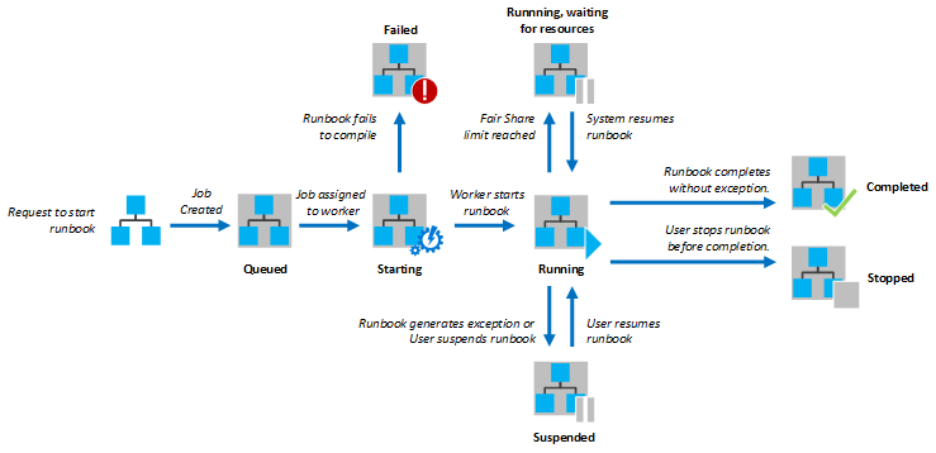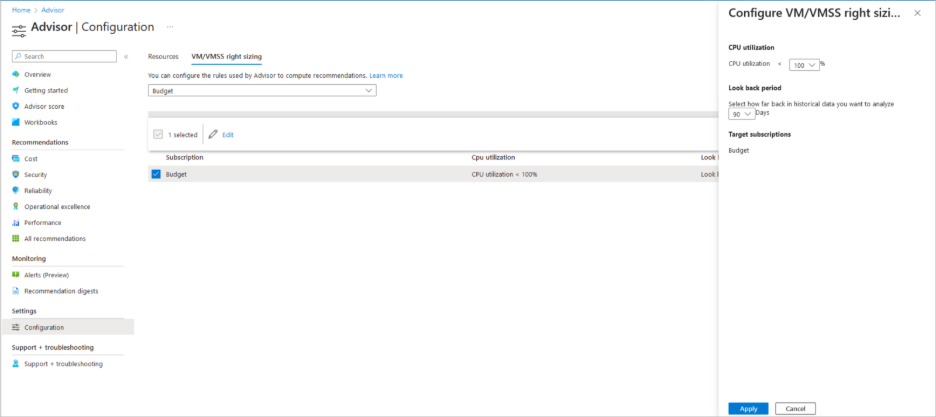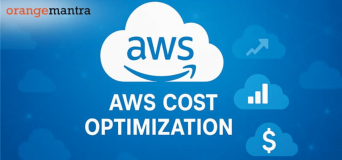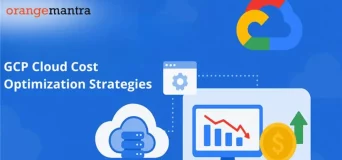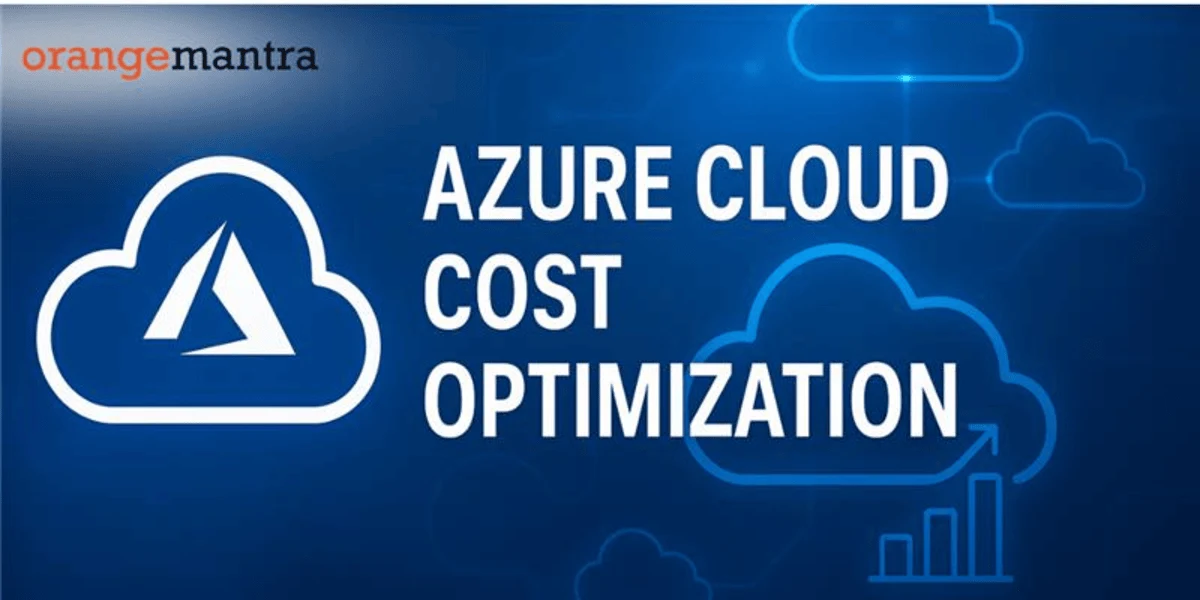
In this blog, you'll discover the exact resources and configuration mistakes that silently drain your budget every month. Learn Azure cloud cost optimization tools, practices, and more.
Here’s what you will learn:
The cloud is sold as a dream. To businesses tethered to on-premise hardware, providers promise a world of better security, effortless scale, and of course, dramatic cost savings.
But for many, that dream breaks with the first bill. That one document reveals a terrifying truth: your new cloud environment is costing you more than your old setup ever did.
If this is you, you’re not alone. “Bill shock” is one of the most common challenges after Azure migration. The good news is that it is also solvable. This guide is your first step toward optimizing your Azure costs and making the cloud deliver on its promise.
To understand the stakes, consider these facts:
- As of 2025, Azure offers over 5,379 ML and AI services.
- Around 38% of organizations worldwide use Microsoft Azure for cloud services.
- Cloud services brought up most of Microsoft’s total revenue. [Source: Statista]
- In Q2 2025, cloud infrastructure revenue was $99 billion, with Azure making up about 20% of that.
| Cloud Provider | Market Share | Visual |
|---|---|---|
| AWS | 30% | |
| Microsoft Azure | 20% | |
| Google Cloud | 13% | |
| Other Providers | 24% | |
| Alibaba Cloud | 4% | |
| Oracle Cloud | 3% | |
| Salesforce | 2% | |
| IBM Cloud | 2% | |
| Tencent Cloud | 2% |
Table of Contents
5 Common Sources of Overspending in Azure
They told you the cloud would save money. Then the first bill comes, and it’s more than you ever spent on-premise. How? Where is your Azure money actually going?
1. Idle Virtual Machines
You are paying for servers that are turned on but not doing any work. A VM left running overnight or on weekends costs the same as one processing data. This includes development and test environments. Decommissioned VMs that were never properly shut down also contribute.
2. Over-Provisioned Resources
You selected a VM size that is too powerful for your workload. You’re paying for 16 CPUs when your application only uses 2. This also applies to allocating too much memory or storage.
Right-sizing these resources is critical for Azure cloud cost optimization. Why buy a race car when you actually need to drive in traffic every day?
3. Unoptimized Storage Tiers
You are using expensive, high-performance storage for data that is rarely accessed. This includes old logs, backups, and archived files.
It’s like ordering an entire industrial power generator to charge your phone. You’re paying for industrial-grade infrastructure for a small consumer’s needs. Moving this data to cooler tiers can cut storage costs significantly.
4. Orphaned Disks and Resources
When you delete a VM, its hard disk and other attached resources often remain. You continue paying for these disconnected components monthly. This also includes unused IP addresses and load balancers that accumulate over time.
5. Unused Reserved Instances
You committed to a 1 or 3-year contract for a discount, but your needs changed. You are now locked into paying for resources you no longer use. This often happens after cloud migrations or project cancellations.
Azure Cost Optimization Best Practices
You know the problem. Now let’s talk about the fix. Here are Azure cost management best practices our cloud consulting company follows to reduce your bill. These are simple and proven methods that work immediately.
1. Shut Down What You Don’t Use
I still remember my dad scolding me when I kept the light on in my room during daylight. He’d just turn it off and open the curtains for natural light. The same principle applies for cost optimization in Azure: stop paying for resources that aren’t working for you.
- Schedule automatic shutdown for development servers using Azure Automation Runbooks
- Implement Azure Policy to automatically delete unattached disks older than 45 days
- Create simple PowerShell scripts that automatically clean up old test environments
- Use Azure Functions to enforce auto-shutdown policies across all subscriptions
The below diagram illustrates the lifecycle of PowerShell, PowerShell Workflow, and graphical runbook jobs.
2. Right-Size Your Resources
Match your server size to your actual needs. As I said earlier, don’t pay for a Lamborghini when you only need a Škoda.
- Use Azure Advisor’s specific VM right-sizing recommendations
- Scale down servers that are using less than 20% of CPU and memory consistently
- Choose cheaper burstable VM series (B-series) for dev/test workloads
- Analyze Azure Monitor metrics for 30 days before resizing production VMs
- Migrate from traditional VMs to containers for better resource utilization
Image showing Advisor Configuration Layout. Taken from learn.microsoft
3. Use the Right Storage Type
Different data need different storage. Don’t pay premium prices for data you rarely use. This will help you manage Azure costs in the longer run.
- Configure automatic tiering policies that move blobs to cooler tiers after 30-90 days
- Use Azure Files Standard for general shares instead of premium unless needed
- Implement lifecycle management rules for backup vaults to reduce storage costs
- Archive old VM managed disks as snapshots instead of keeping them as active disks
- Choose locally-redundant storage (LRS) for non-critical data instead of geo-redundant
Note: If you want to analyze cost savings from file packing, refer to the ‘Packing Saving’ tab in this workbook (by Azure)
4. Commit to Save Money
You can get discounts by committing to use Azure long-term, but this works best for predictable workloads. Cost optimization in Azure with the help of discounts can be challenging because it often requires multi-year commitments, and future needs can change, especially in the fast-evolving era of AI development.
- Purchase Azure Reservations for steady-state production VMs and databases
- Use Spot VMs for batch processing, CI/CD pipelines, and development workloads
- Combine Savings Plans with reservations for maximum flexibility and coverage
- Analyze 30-60 days of usage data before making any reservation purchases
- Leverage Azure Hybrid Benefit to bring your existing Windows Server/SQL licenses
5. Automate Everything
Another answer to your question of “how to reduce azure costs” is CI/CD automation. Let Azure handle the cost-saving tasks automatically.
- Configure budget alerts with Action Groups to notify teams via Slack/Teams
- Implement Azure Policy to enforce mandatory tags on all new resources
- Set up autoscaling rules for App Services and VM Scale Sets based on real metrics
- Deploy Azure Blueprints that include cost governance by default
- Use Azure Logic Apps to automatically remediate common cost issues
6. Review Regularly
Check your spending often to catch problems early. There are many Azure optimization tools for that.
- Conduct weekly cost analysis reviews using Azure Cost Management
- Create Power BI dashboards that show spend by team, project, and environment
- Establish monthly cost review meetings with all engineering team leads
- Implement chargeback/showback models to create cost awareness
- Use Azure Resource Graph to quickly identify untagged and orphaned resources
10 Best Azure Cost Optimization Tools
You can’t fix your Azure bill with spreadsheets and guesswork. You need the right azure optimization tools to see where the money is going and automatically plug the leaks.
Microsoft gives you most of them for free. Here are the 10 best tools for Azure cloud cost optimization that actually works.
| Tool | Description |
|---|---|
| Azure Cost Management + Billing | Built-in free tool that provides cost analysis, budgeting, forecasting, and specific optimization recommendations for your Azure environment. |
| Azure Advisor | Your personalized cloud consultant that analyzes resource utilization and provides specific recommendations for right-sizing and deleting unused resources. |
| Azure Policy | Enforcement engine that automatically applies governance rules, requires tagging, and prevents deployment of expensive resource types in wrong environments. |
| Azure Automation | Handles routine cost-saving tasks through automated start/stop schedules, cleanup scripts, and auto-scaling based on actual demand patterns. |
| Azure Monitor | Provides deep performance insights and resource utilization metrics to make data-driven decisions about right-sizing and optimization opportunities. |
| Azure Resource Graph | Lets you quickly query your entire Azure environment to find untagged resources, orphaned disks, and underutilized services across all subscriptions. |
| CloudHealth by VMware | Enterprise-grade cloud management platform offering advanced cost analytics, reporting, and optimization across multiple cloud providers. |
| Turbonomic | AI-powered resource optimization that automatically rightsizes resources in real-time based on application performance demands and cost constraints. |
| Apptio Cloudability | Business-focused cloud financial management tool that provides detailed cost allocation, budgeting, and showback/chargeback capabilities. |
| ParkMyCloud | Specialized tool for automating start/stop schedules across cloud resources with simple “parking” schedules to eliminate waste from idle resources. |
How to Make Azure Cloud Cost Optimization Continuous?
Cloud cost optimization is an ongoing discipline that needs to become part of your team’s DNA. The goal is to move from reactive firefighting to proactive management where cost consciousness becomes as natural as writing code or deploying features.
1. Build Daily Habits
I was taught in school that one good daily habit leads to others. It’s a lesson that works everywhere in life, including managing your Azure cloud costs.
You should make cost visibility part of your team’s daily routine, just like checking email or attending stand-up meetings. Start with a simple 5-minute daily check of your Azure Cost Management dashboard to spot unusual spending patterns early.
Establish weekly cost review sessions that are treated as non-negotiable meetings and make sure every team member understands how their technical decisions directly impact the company’s cloud bill.
2. Automate Everything Possible
Human-dependent processes will eventually fail, so automation is your most reliable ally in continuous cost optimization. Use Azure Policy to enforce tagging and prevent expensive resources in development
Set up auto-scaling to adjust capacity based on demand and create automated shutdown schedules for non-production environments. If you are not an expert in that, you can use DevOps consulting services as well.
3. Create Clear Accountability
Without clear ownership, cost optimization efforts quickly lose momentum. Assign specific cost owners for each service and project who are responsible for monitoring and justifying their spending.
Implement showback reporting that gives teams direct visibility into their resource consumption and establish clear cost targets that are regularly reviewed and updated as business needs evolve.
4. Build Effective Feedback Loops
For better Azure cloud cost optimization, you should create multiple layers of feedback to catch cost issues before they become budget disasters. Schedule weekly cost meetings with engineering leads and monthly deep dives with leadership.
Set up real-time alerts that notify relevant teams immediately when unusual spending patterns occur. It may look like a big thing, but cost optimization in azure is not possible without all this.
5. Make It Part of Your Culture
The most sustainable Azure cost optimization happens when it becomes embedded in your organization’s culture. Include cost requirements in design documents, train new hires on cost principles, and celebrate savings like product launches.
6. Keep Learning and Adapting
The cloud never stops changing. Regularly review new Azure pricing and services, re-evaluate reservations every six months, and stay current with evolving best practices.
Conclusion
Here’s the truth nobody in the cloud business wants to say out loud: cost optimization never ends.
This isn’t what you signed up for. You moved to the cloud for agility and innovation, not to become a full-time financial detective hunting down wasted pennies.
But this is the reality of the pay-as-you-go model – it’s designed to be easy to spend, and deliberately difficult to track.
The strategies we’ve covered work. They’ve cut bills by 30%, 40%, even 50% for companies like yours. But they require something most providers don’t mention: constant vigilance.
Start with one habit today. The rest will follow.
Your Azure bill will never optimize itself. But now you know how to keep it under control. If you need more help, our Azure consulting services can help.
FAQs
Q1. Is the cloud actually cheaper than on-premise servers?
It can be, but not automatically. If you just lift-and-shift without optimizing, the cloud is often more expensive. The savings come from using its flexibility, not from the migration itself.
Q2. We’re already overwhelmed. Do we need another full-time job managing costs?
Not if you automate it properly. The initial setup takes effort, but tools like Azure Policy and automated schedules do the ongoing work for you. It’s about working smarter, not harder.
Q3. Will Azure cloud cost optimization hurt our performance?
Not if done correctly. Optimization is about removing waste, not capability. It’s the difference between giving everyone a sports car for their commute versus providing the right vehicle for each job.
Q4. Are reservations really worth the commitment?
Only for your stable, predictable workloads. If you buy them for the wrong resources, they become an expensive trap. Always analyze your usage before committing.
Q5. We have tagging. Why are we still over budget?
Because tagging alone doesn’t save money. It just tells you who to blame. You need to combine it with policies, budgets, and accountability to actually control spending.
